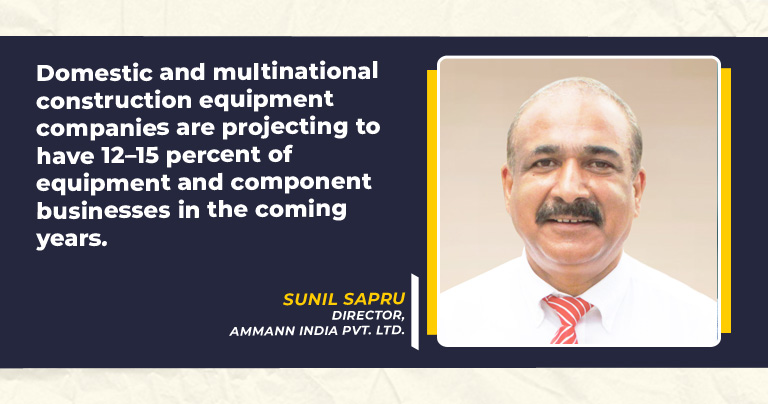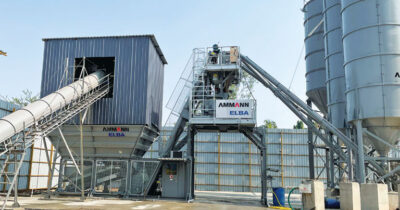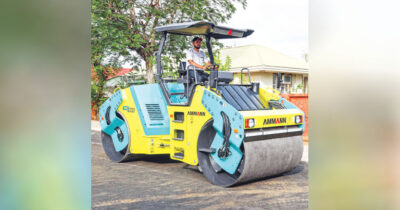Advanced equipment and fuel efficiency will rule the construction equipment market
By Edit Team | January 11, 2023 4:37 pm SHARE

Sunil Sapru, Director at Ammann India Pvt. Ltd., highlighted the trends and advancements in road construction equipment and noted that ongoing innovations are enhancing the market for construction equipment in the future.
What types of construction equipment are required to meet quality and speedy construction requirements?
Road construction is a highly technical venture that requires meticulous planning and deployment of specialised road equipment.Quite often, making a road involves blasting rocks, deep excavations, and other complex tasks requiring a wide range of construction equipment.
Automated asphalt plants, advanced technology pavers, and compaction equipment are critical for meeting quality and speed goals in road construction. Ammann’s innovations in road construction equipment are proven worldwide.

What are the present procurement trends in construction equipment for efficient project completion?
In recent years, we’ve seen machinery evolve, becoming smarter, using less fuel, and producing fewer emissions. Using telematics, today’s equipment can also communicate—tell us when a repair needs to be made, set limits on producing more for the operator, or alert the owner if someone tries to steal it.
In terms of technology and innovation, what does the future hold for construction equipment?
The future of construction equipment is exciting with its continuous innovations. Some of the exciting trends include the following:
Autonomous construction equipment: Imagine a fleet of equipment that can be operated remotely or without an operator. That day is coming!
Smart technology: The data equipment produced today scratches the surface of what’s possible. In the future, different machine components can communicate with each other, further enhancing telematics and predictive systems.
Fuel savings: Machinery is getting lighter and more efficient, helping to reduce operating costs without sacrificing performance.
How do you need training and skill development to measure equipment maintenance and safety?
Training and skill development are musts for plants and machines’ optimum performance and safety. Modern training tools are required to train people on the latest technological products. Such modern tools for construction operator skill development include simulators and iron training.
Operator training is becoming an increasingly pressing issue in the construction industry, resulting in a continuing skills shortage. Filling the gaps by recruiting and retaining a fresh generation of talent is challenging and costly.

What are the procurement challenges in your business? What measures are being taken to iron out those issues?
Procurement is a complex process and can be difficult for many organisations, including equipment and product manufacturers. We’ve compiled six of the more common problems related to purchasing and vendor relations, which include Risk Mitigation; Dark Purchases; Lack of transparency;Inaccurate data; Failure to adopt technology; and Supplier-related issues.
Ammann, with more than 150 years of experience in the construction equipment manufacturing industry, has well-established global procurement strategies and well-defined vendor selection criteria.
With the infrastructure sector becoming smart and intelligent, which technologies drive efficiency at project sites?
The construction equipment industry is in the midst of considerable change. Demand has been highly volatile and is currently weak; the customer landscape and expectations of OEMs are changing; new and potentially revolutionary technologies are coming (for instance, electrification, emission standards, and big data); and competitors from emerging markets are getting stronger. Change is not new in construction equipment. But what is unique about this moment in the industry’s development is that many of these changes are converging and hitting the industry all at once.
Although most trends have a global impact, these shifts will likely be accentuated in India. The Indian market has traditionally been complex, with various local specifications, and fragmented, with OEMs focused on national markets. Although the market has been consolidating for years as demand and standards have globalised, India remains more complex and fragmented than other markets. Today, more than 250 OEM groups are active in India. Furthermore, the Indian demand situation has been good for several years because construction activity is high.
Cookie Consent
We use cookies to personalize your experience. By continuing to visit this website you agree to our Terms & Conditions, Privacy Policy and Cookie Policy.




































-20240213125207.png)

























